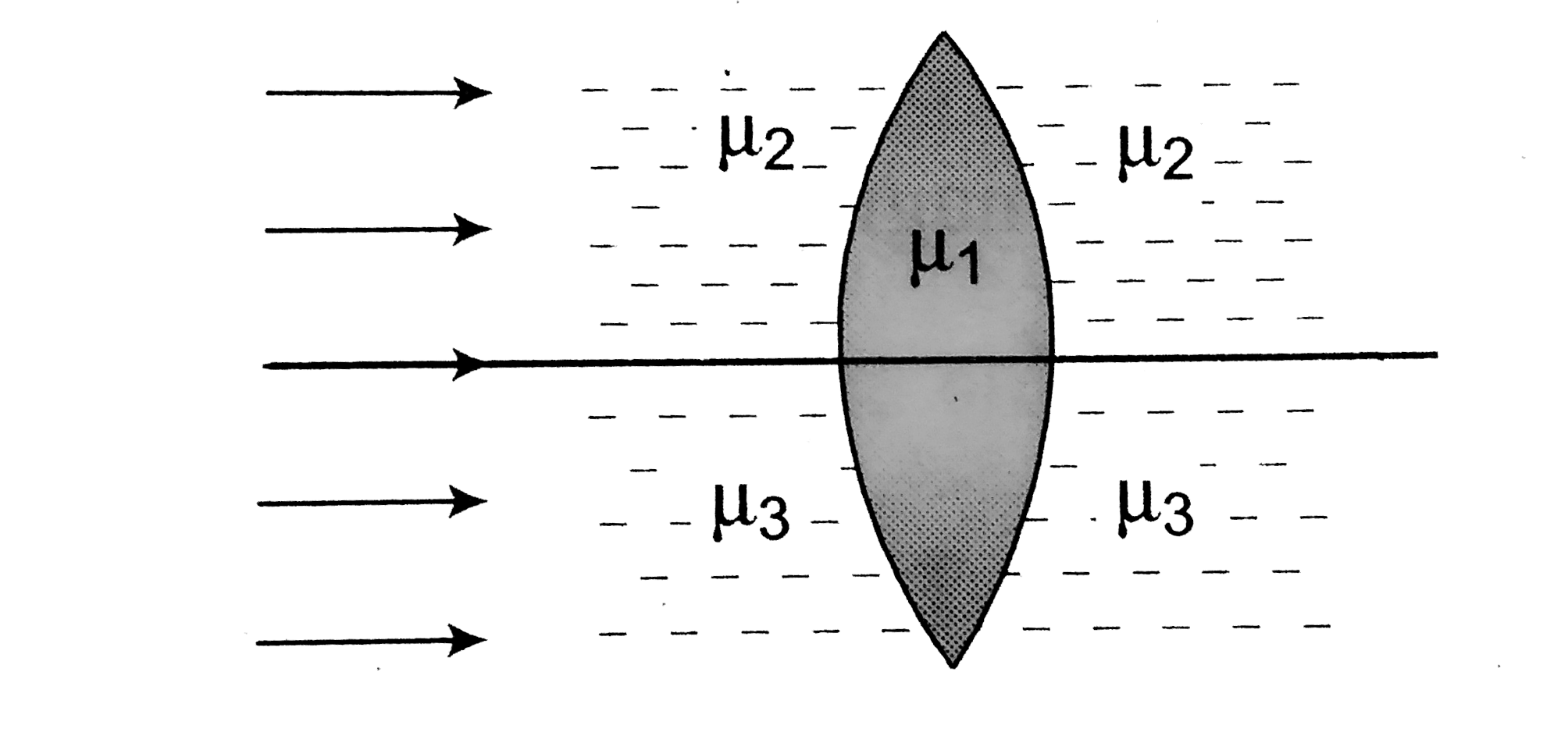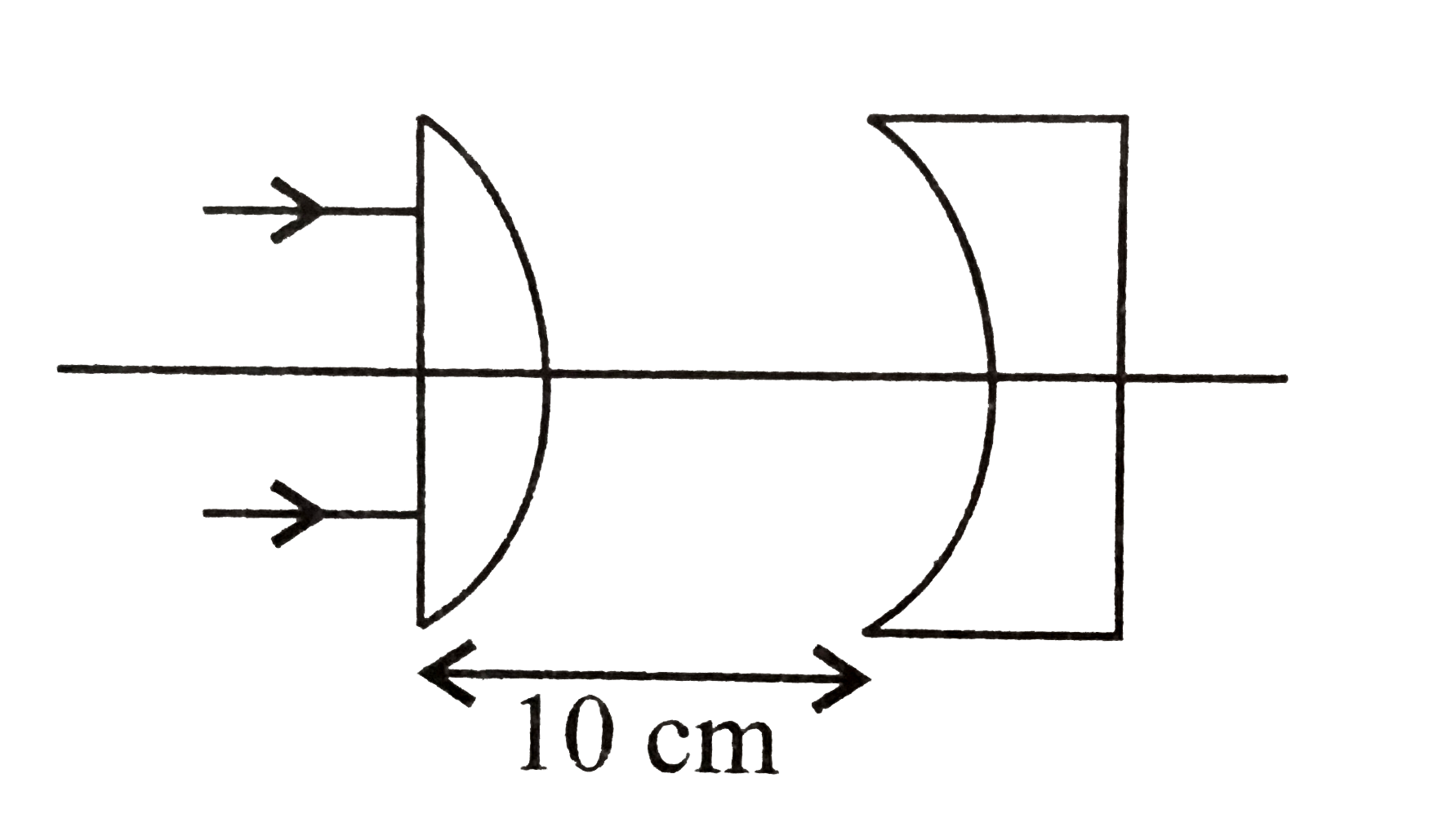Complete Solutions to Reflection At Spherical Surfaces And By Lenses of chapter RAY OPTICS AND OPTICAL INSTRUMENTS of Class 12 book with complete answers and questions
| Class 12 | PHYSICS |
| Chapter | RAY OPTICS AND OPTICAL INSTRUMENTS |
| NCERT FINGERTIPS | Reflection At Spherical Surfaces And By Lenses |
| Number Of Questions | 41 |
| Academic Year | 2023-24 |
From a point source a light falls on a spherical glass surface (`mu = 1.5` and radius of curvature `= 10 cm`). The distance between point source and glass surface is `50 cm`. The position of image is
View SolutionAn air bubble in a glass sphere `(mu = 1.5)` is situated at a distance `3 cm` from a convex surface of diameter `10 cm`. At what distance from the surface will the bubble appear ?
View SolutionA convex refracting surface of radius of curvature `20 cm` separates two media of refractive indices `4//3 and 1.60`. An object is placed in the first medium `(mu = 4//3)` at a distance of `200 cm` from the refracting surface. Calculate the position of image formed.
View SolutionLight from a point source in air falls on a spherical glass surface. If `mu = 1.5`, and radius of curvature `= 20 cm`, the distance of light source from the glass surface is `100 cm` , at what position will the image be formed ? (NCERT Solved Example)
View SolutionA mark placed on the surface of a sphere is viewed through glass from a position directly opposite. If the diameter of the sphere is `10 cm` and refractive index of glass is `1.5`, find the position of the image.
View SolutionA biconvex lens has focal length `(2)/(3)` times the radius of curvature of either surface. Calculate refractive index of material of the lens.
View SolutionA convex lens of focal length `0.2 m` and made of glass `(mu = 1.50)` is immersed in water `(mu = 1.33)`. Find the change in the focal length of the lens.
View SolutionA double convex lens, lens made of a material of refractive index `mu_(1)`, is placed inside two liquids or refractive indices `mu_(2)` and `mu_(3)`, as shown. `mu_(2)gtmu_(1)gtmu_(3)`. A wide, parallel beam of light is incident on the lens from the left. The lens will give rise to

View SolutionA double convex lens is made of glass of refractive index `1.55` with both faces of same radius of curvature. Find the radius of curvature required, if focal length is `20 cm`.
View SolutionWhat is the refractive index of material of a plano-convex lens , if the radius of curvature of the convex surface is 10 cm and focal length of the lens is 30 cm ?
View SolutionThe radii of curvature of the surfaces of a double convex lens are `20 cm and 40 cm` respectively, and its focal length is `20 cm`. What is the refractive index of the material of the lens ?
View SolutionA convex lens is dipped in a liquid whose refractive index is equal to the refractive of the lens. Then its focal length will
View SolutionA convergent beam of light passes through a diverging lens of focal length `0.2 m` and comes to focus at a distance of `0.3 m` behind the lens. Find the position of the point at which the beam would converge in the absence of the lens.
View SolutionRadii of curvature of a converging lens are in the ratio `1 : 2`. Its focal length is `6 cm` and refractive index is `1.5`. Then its radii of curvature are
View SolutionA man is trying to start a fire by focusing sunlight on a piece of paper using an equiconvex lens of focal length `10 cm`. The diameter of the sun is `1.39 xx 10^(9) m` and the diameter of the sun's image on the paper is
View SolutionA square card of side length 1 mm is being seen through a magnifying lens of focal length 10 cm. The card is placed at a distance of 9 cm from the lens. The appaent area of the card thorugh the lens is
View SolutionA converging lens is used to form an image on a screen. When the upper half of the lens is covered by an opaque screen
View SolutionWhich of the following form(s) a virtual and erect image for all position of the object?
View SolutionA real image of a distant object is formed by a plano-convex lens of its principal axis. Spherical aberration
View SolutionAn object is placed at a distance of `1.5 m` from a screen and a convex lens is interposed between them. The magnification produced is `4`. What is the focal length of the lens ?
View SolutionThe image of a needle placed `45 cm` from a lens is formed on a screen placed `90 cm` on the other side of lens. Find displacement of image if object is moved `5 cm` away from lens.
View SolutionA tree is `18.0 m` away from `2.0 m` high from a concave lens. How high is the image formed by the given lens of focal length `6 m` ?
View SolutionA luminous object is separated from a screen by distance d. A convex lends is placed between the object and the screen such that it forms a distinct image on the screen. The maximum possible focal length of this convex lens is.
View SolutionA screen is placed `90 cm` from an object. The image of the object on the screen is formed by a convex lens at two different location separated by `20 cm`. Determine the focal length of the lens.
View SolutionA lens having focal length `f` and aperture of diameter `d` forms an image of intensity `I`. Aperture of diameter `d//2` in central region of lens is covered by a black paper. Focal length of lens and intensity of image now will be respectively
View SolutionA thin convex lens of focal length `25 cm` is cut into two pieces `0.5 cm` above the principal axis. The top part is placed at (0,0) and an object placed at `(-50 cm, 0)`. Find the coordinates of the image.
View SolutionA double convex lens made of glass of refractive index `1.56` has both radii of curvature of magnitude `20 cm`. If an object is placed at a distance of `10 cm` from this lens, find the position of image formed.
View SolutionThe power of a biconvex lens is 10 dioptre and the radius of curvature of each surface is 10 cm. Then the refractive index of the material of the lens is
View SolutionA thin glass (refractive index `1.5`) lens has optical power of `-8D` in air, its optical power in a liquid medium with refractive index `1.6` will be
View SolutionThe radius curvature of each surface of a convex lens of refractive index 1.5 is 40 cm. Calculate its power.
View SolutionTwo lenses of focal lengths `20 cm and - 40 cm` are held in contact. The image of an object at infinity will be formed by the combination at
View SolutionAn eye specialist prescribes spectacles having combination of convex lens of focal length 40cm in contact with a concave lens of focal length 25cm. The power of this lens combination in diopters is
View SolutionTwo lenses of power `+ 10 D and - 5 D` are placed in contact,
(i) Calculate the focal length of the combination
(ii) where should an object be held from the combination so as to obtain a virtual image of magnification `2` ?
View SolutionA real image of an object is formed at a distance of `20 cm` from a lens. On putting another lens in contact with it, the image is shifted `10 cm` towards the combination, Determine the power of the second lens.
View SolutionA concave lens is placed in contact with a convex lens of focal length `25 cm`. The combination produces a real image at a distance of `80 cm`, when an object is at a distance of `40 cm`. What is the focal length of concave lens ?
View SolutionTwo identical glass `(mu_(g)=3//2)` equiconvex lenses of focal length f are kept in contact. The space between the two lenses is filled with water `(mu_(w)=4//3)` . The focal length of the combination is
View SolutionA convex lens of focal length 15 cm is placed on a plane mirror. An object is placed at 30 cm from the lens. The image is
View SolutionIn the given figure, the radius of curvature of curved surface for both the plano-convex and plano-concave lens is 10 cm and refractive index for both is `1.5`. The location of the final image after all the refractions through lenses is

View SolutionA convex lens of radii of curvature 20cm and 30 cm respectively. It is silvered at the surface which has smaller radius of curvature. Then it will behave as `(mu_(g) = 1.5)`
View SolutionA concave mirror of focal length `f_(1)` is placed at a distance of `d` from a convex lens of focal length `f_(2)`. A beam of light coming from infinity and falling on this convex lens-concave mirror combination returns to infinity. The distance `d` must equal.
View SolutionA plano convex lens has focal length `f = 20 cm`. If its plane surface is silvered, then new focal length will be
View Solution
Reflection At Spherical Surfaces And By Lenses questions and complete solutions for chapter RAY OPTICS AND OPTICAL INSTRUMENTS of NCERT FINGERTIPS PHYSICS (HINGLISH) of Class 12